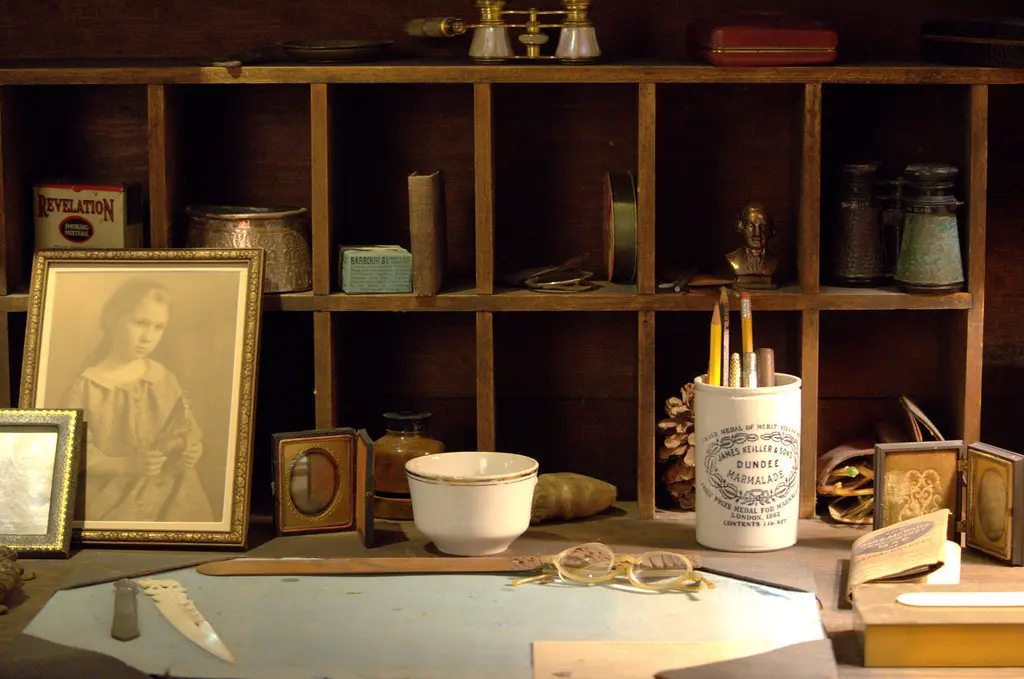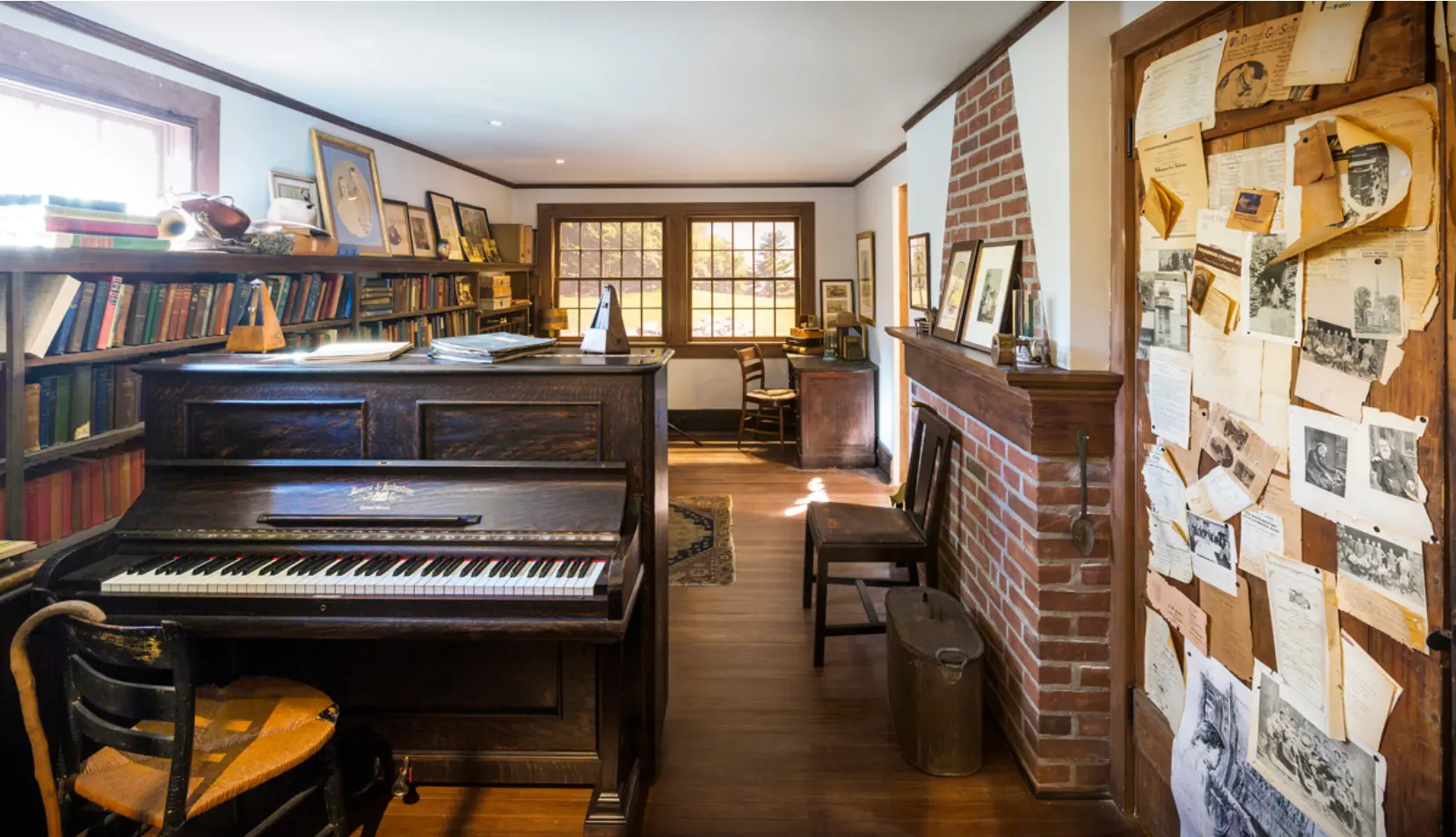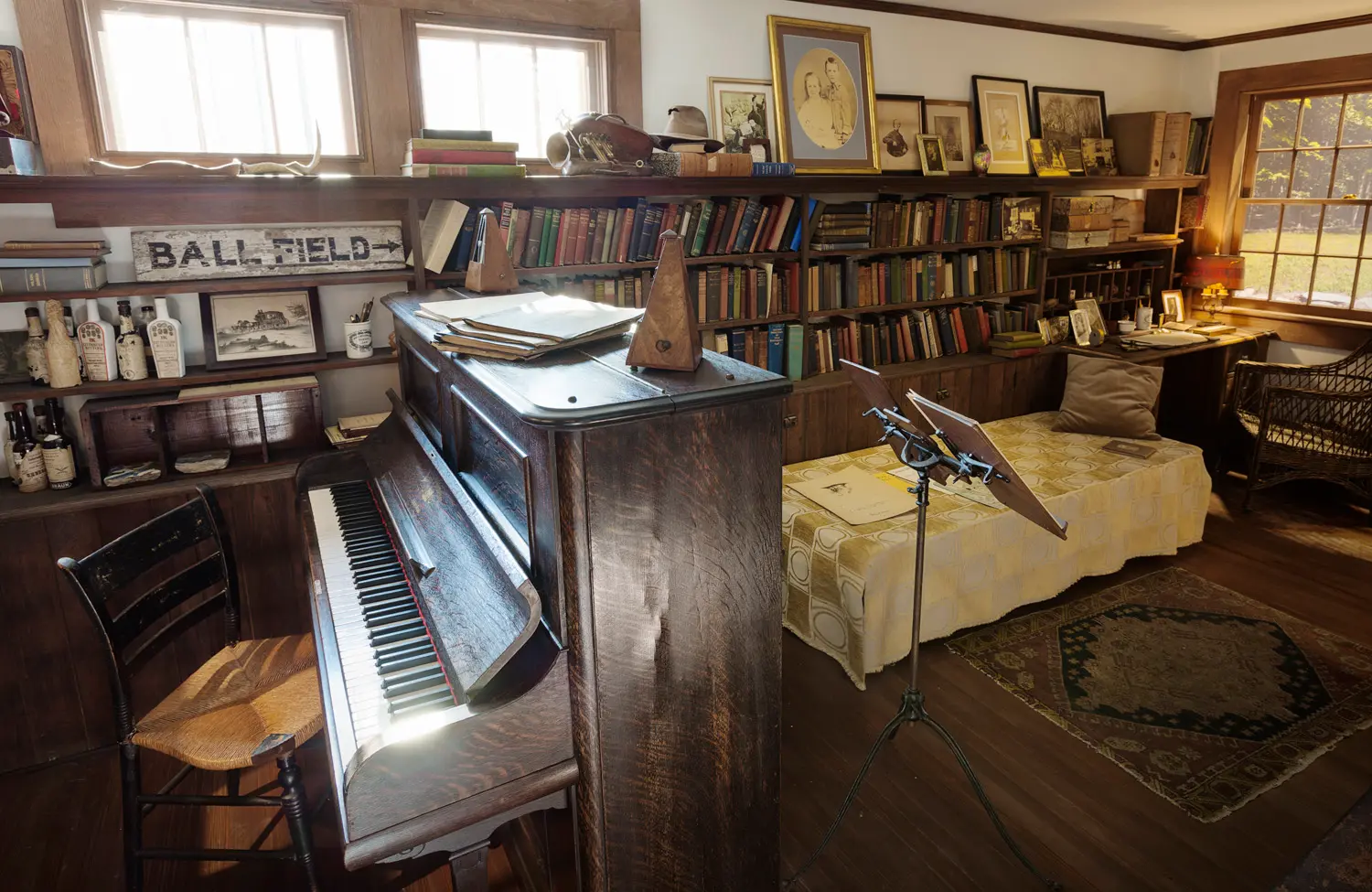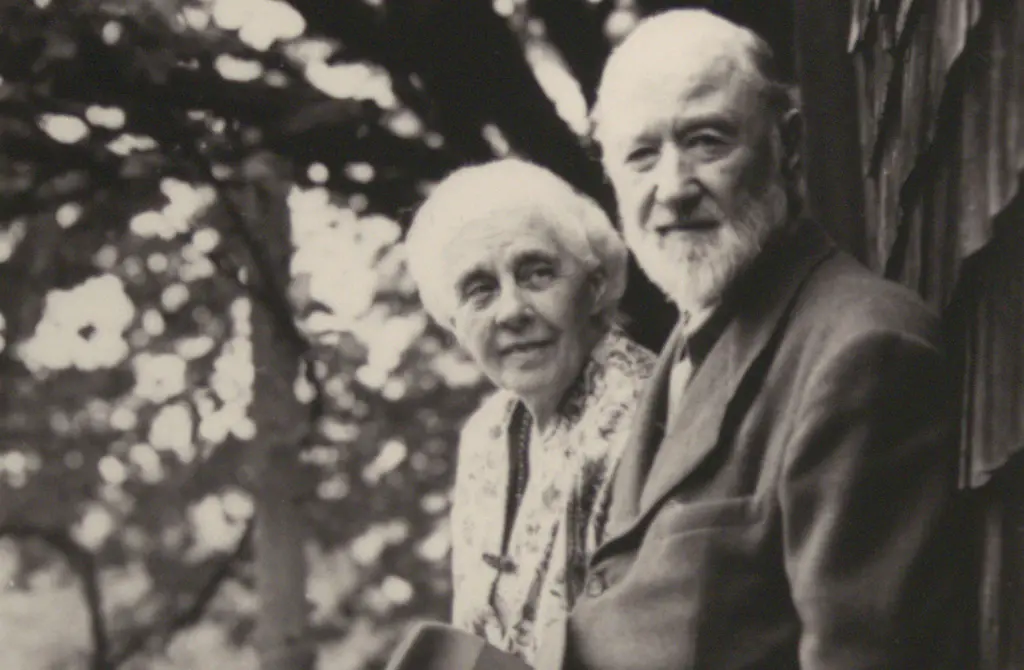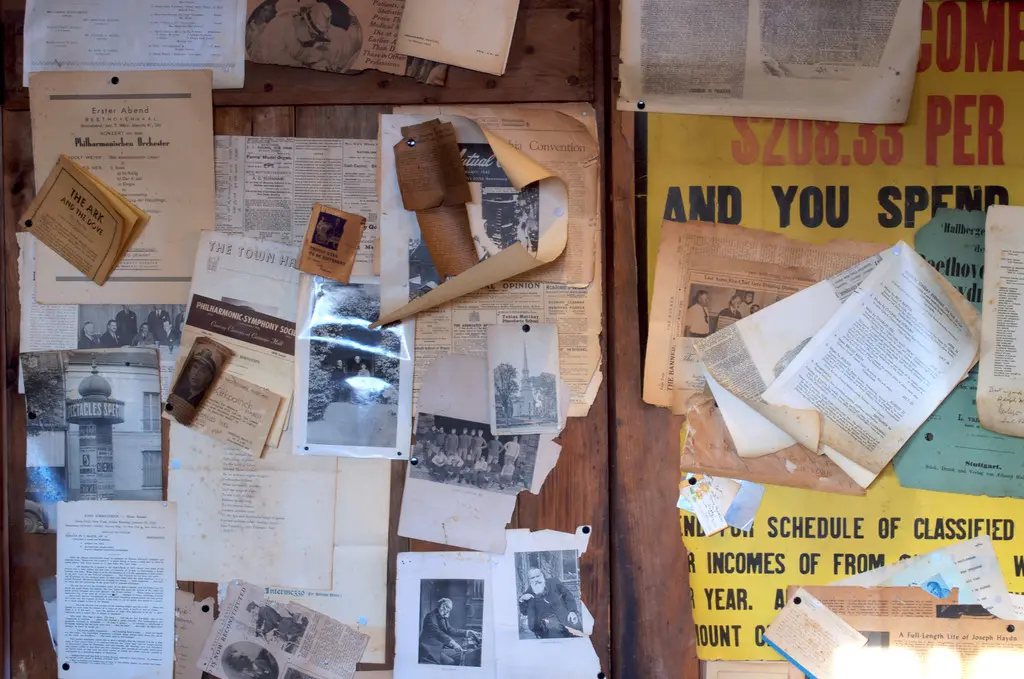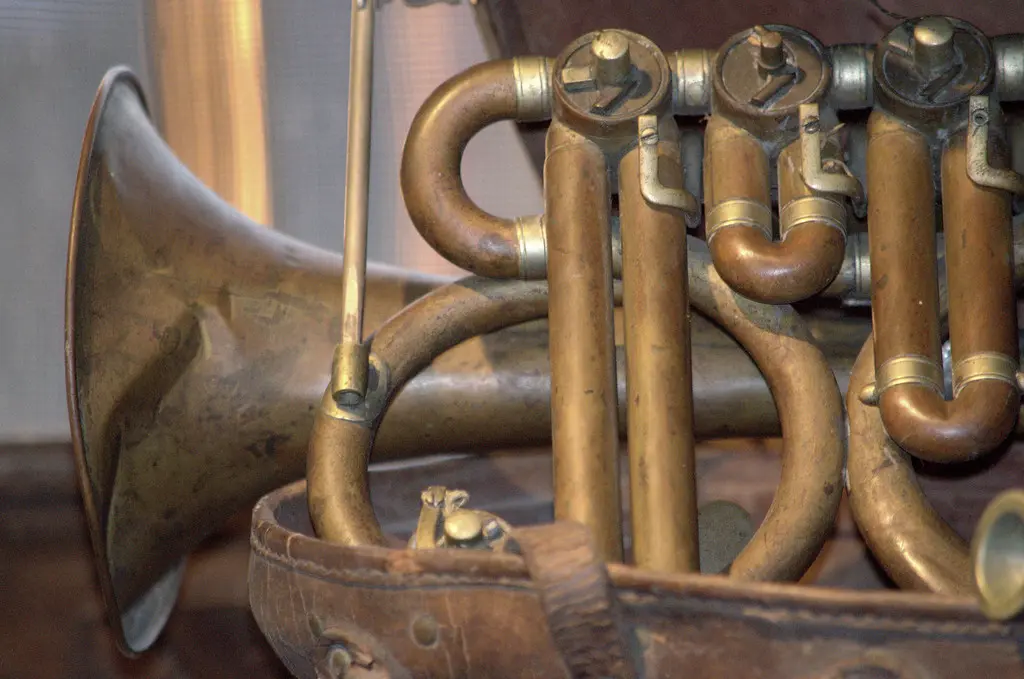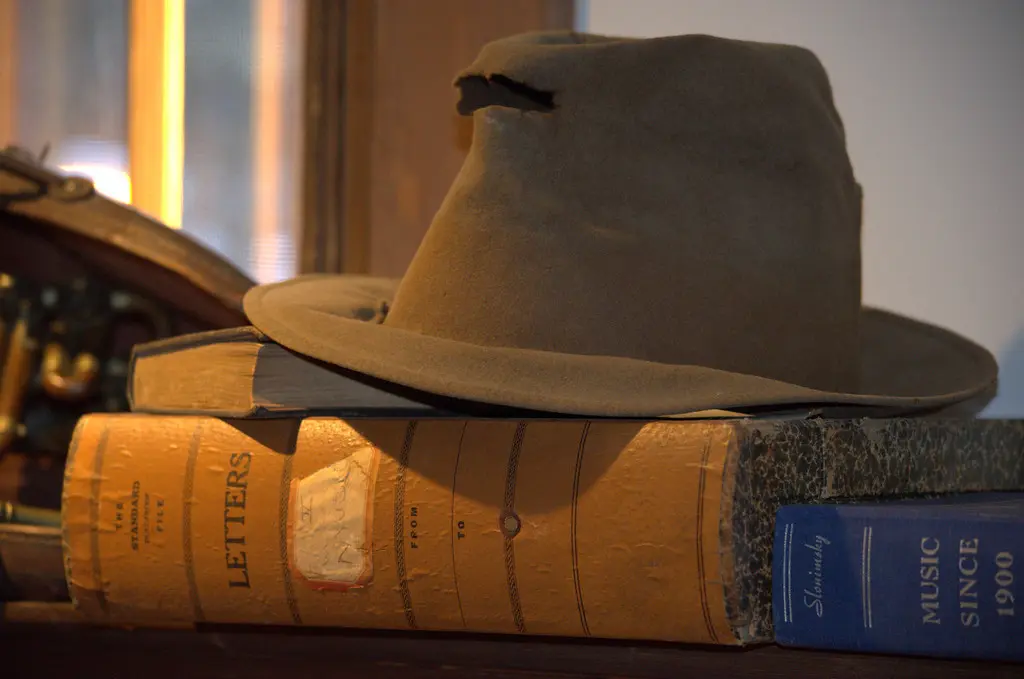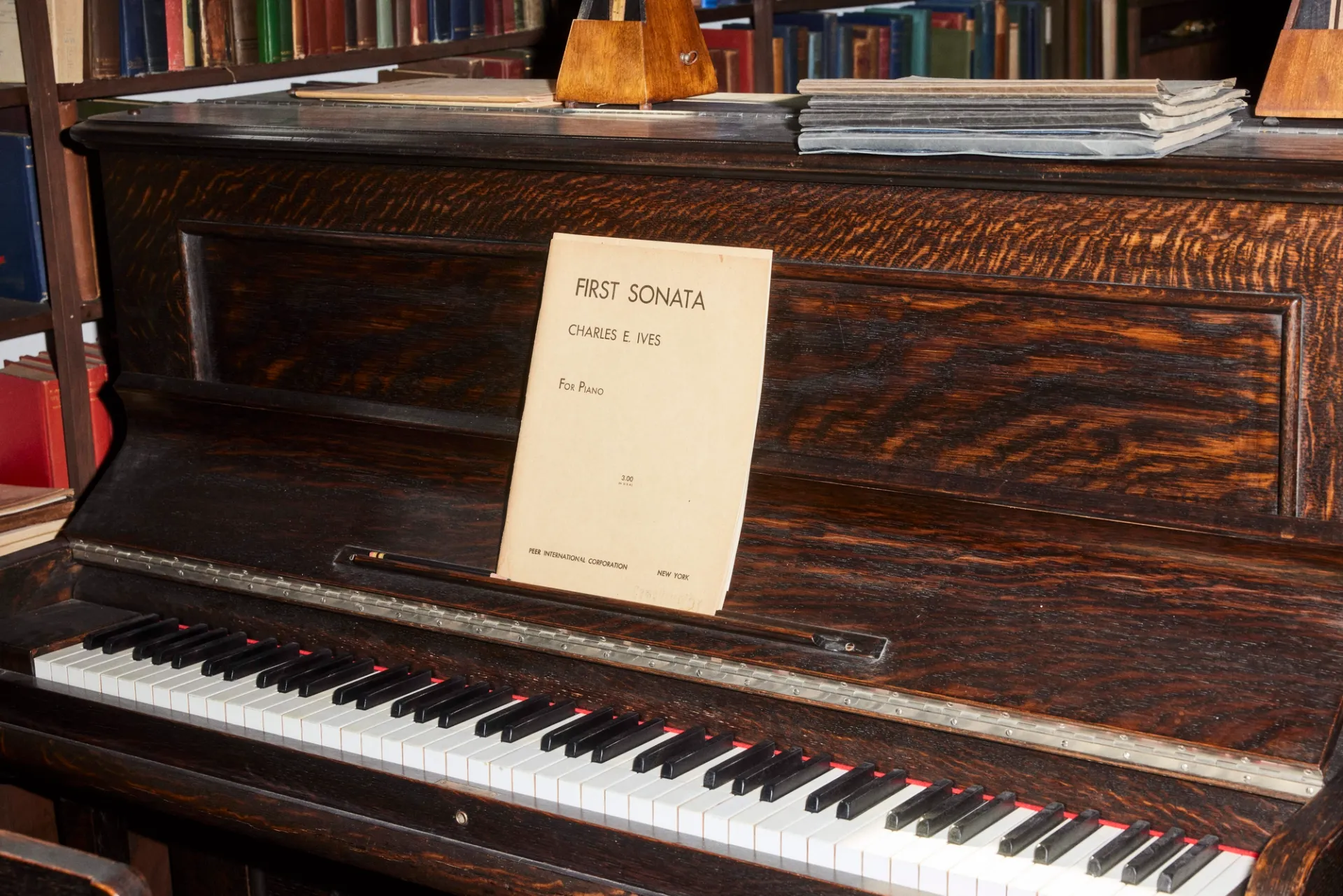“I cannot imagine a better recreation of the Ives study. Stepping in there was very emotional for me. I felt as if I were back in the Redding house.”
—Charles Ives Tyler
Modernist composer Charles Ives (1874–1954) was elected to Arts and Letters in 1946. In 1969, his widow, Harmony Ives, bequeathed the future royalties from his music to Arts and Letters to support the work of other composers through awards. Since then, royalty income has funded over 385 scholarships and fellowships in music composition; the Charles Ives Opera Prize of $50,000; and the Charles Ives Living, which gives a promising composer $200,000 over two years.
In 2012, Charles Ives’s grandson, Charles Ives Tyler, donated the entire contents of his grandfather’s studio in Redding, Connecticut, to Arts and Letters for permanent exhibition. Ives worked in the studio for the last four decades of his life. On its modest upright piano, he composed and finished the major works Three Places in New England, The Fourth Symphony, The Second Orchestral Set, and The Fourth Violin Sonata in addition to about 40 songs.
In 2014, over 3,000 objects from Ives’s studio were catalogued and restored, including furnishings and the double doors to which Ives pinned clippings, photographs, and keepsakes. These objects are now installed in a replica of the studio in Arts and Letters’s East Building, where a permanent exhibition explores Ives’s life and work in Redding. In the words of architect Henry N. Cobb, former President of Arts and Letters, “In recreating the Ives Studio and preserving its contents in situ, our goal is to make this important documentary record permanently available to scholars and an interested public.”
The Charles Ives Studio may be visited by appointment and on public tours of Arts and Letters. Email info@artsandletters.org for more information and to make an appointment (available with 2 days advance notice, Thursday–Sunday, 12–5pm when exhibitions are on view).
Credits
Architect
James Vincent Czajka
Historian
Vivian Perlis
Exhibition Curator
Eileen Gallagher
Exhibition Design
Poulin + Morris
Lighting Design
Melanie Freundlich
Historic Reconstruction
Robert Strada + Richard Ward Baxter
